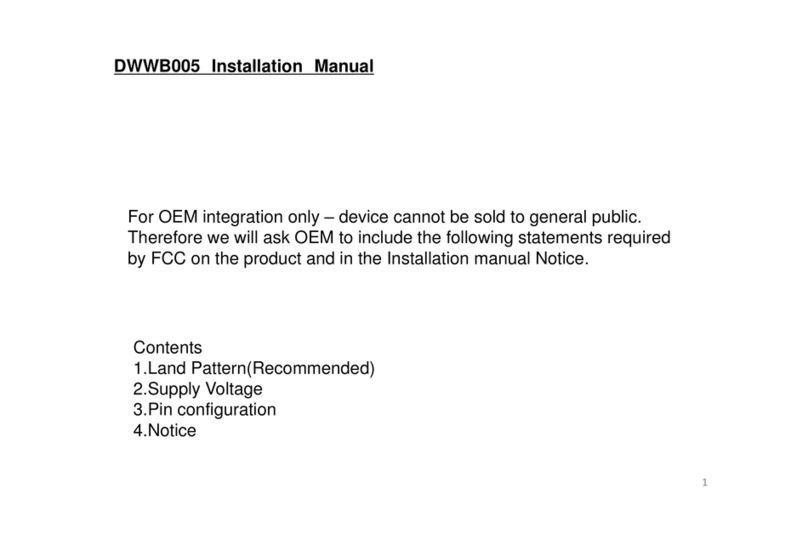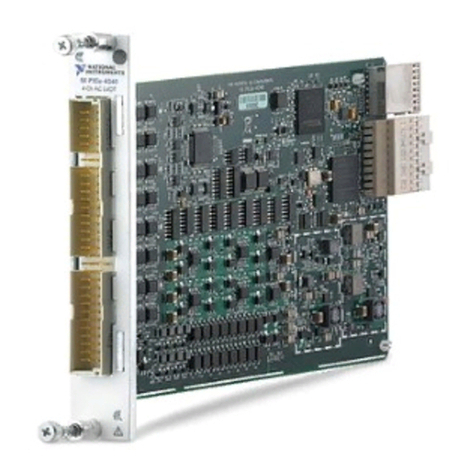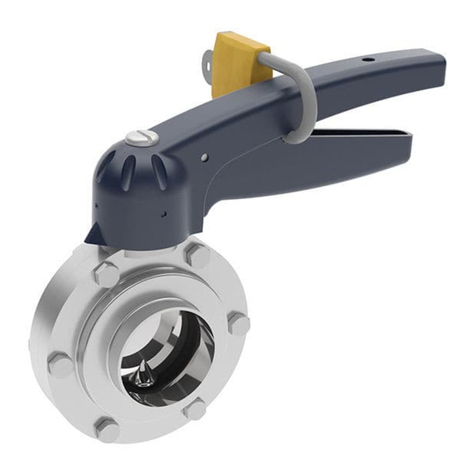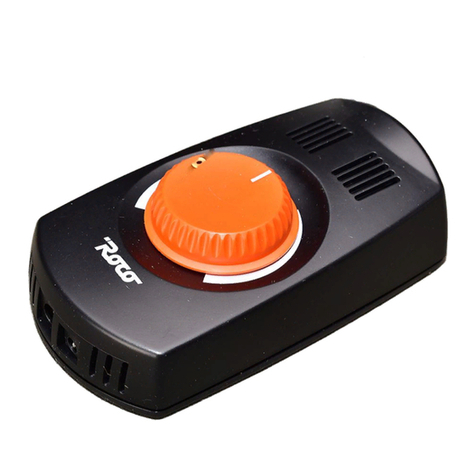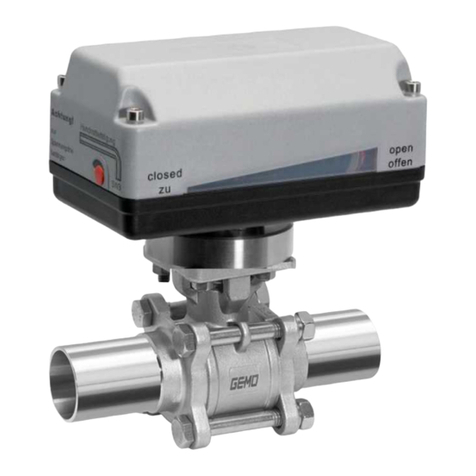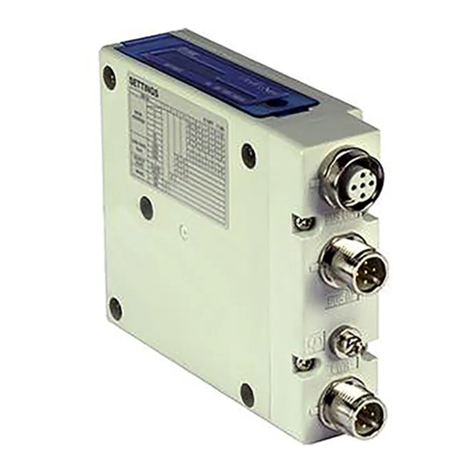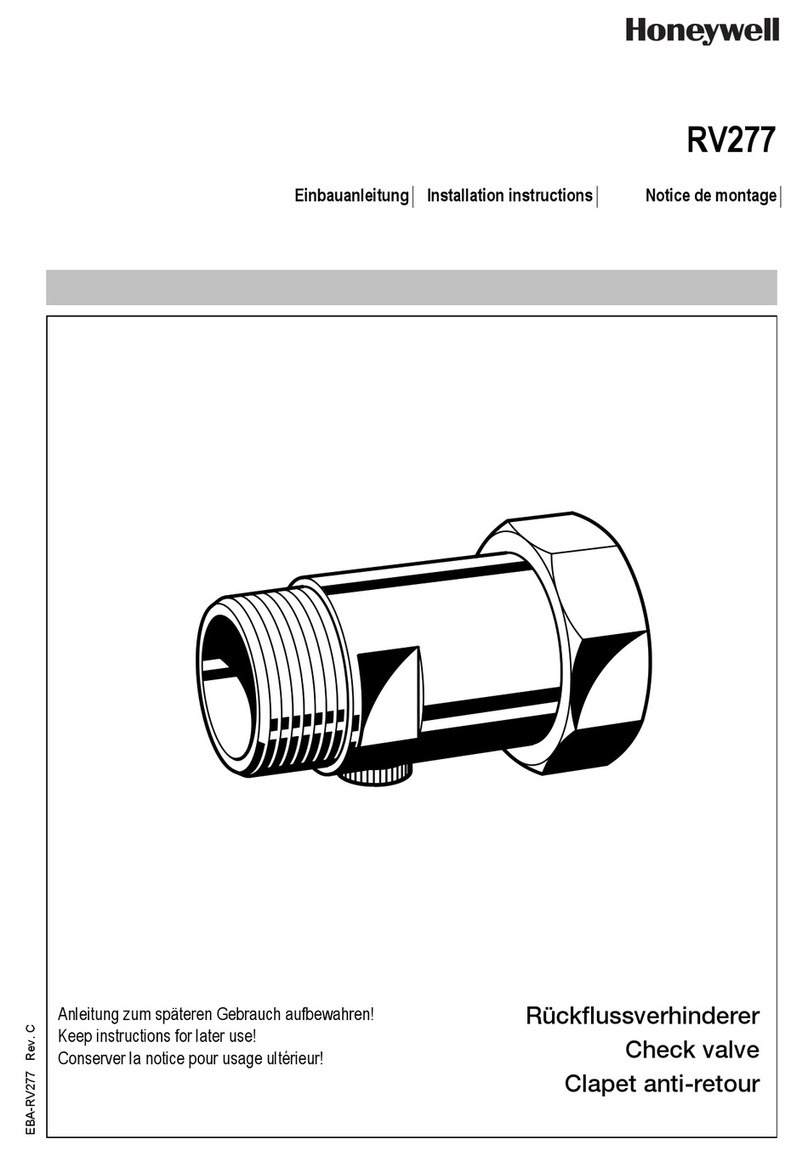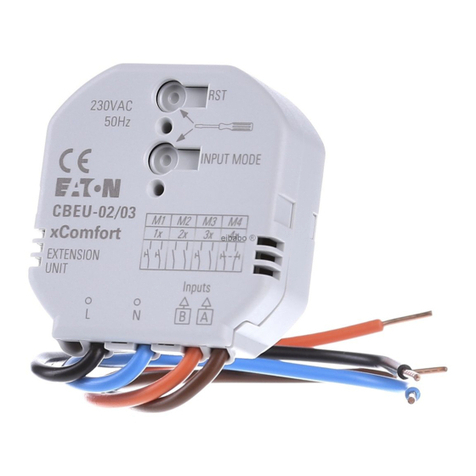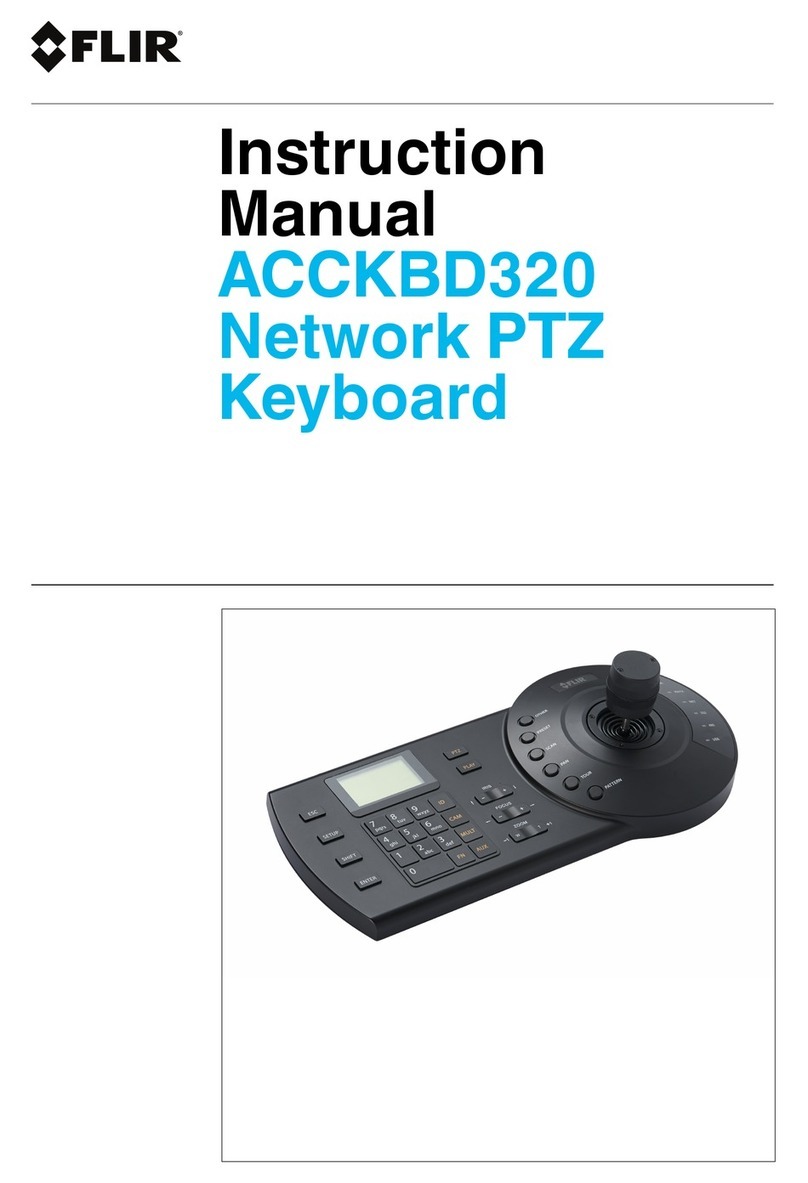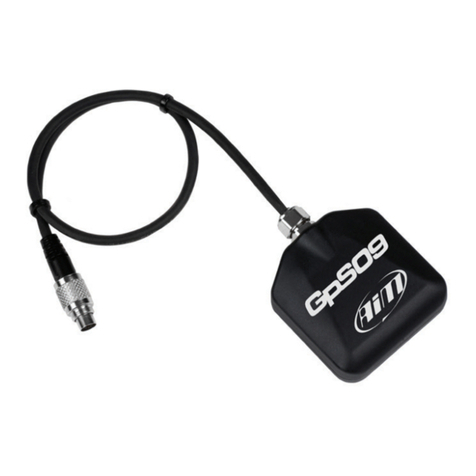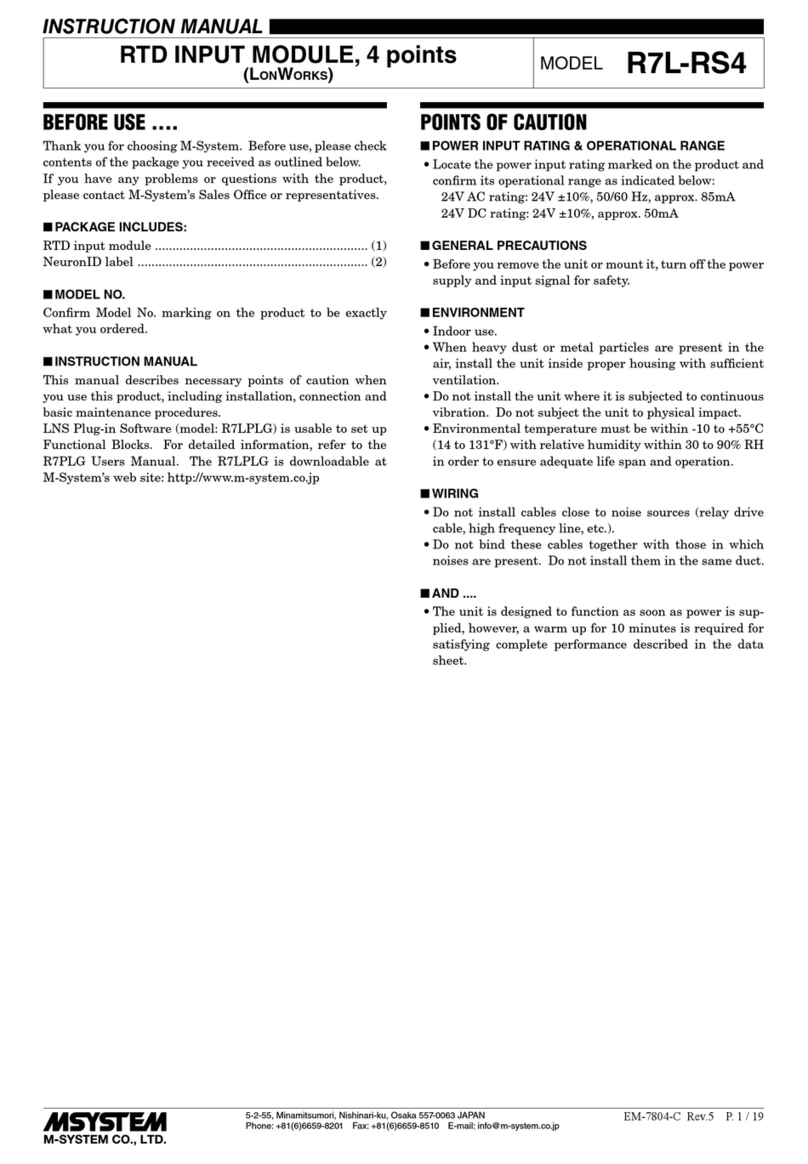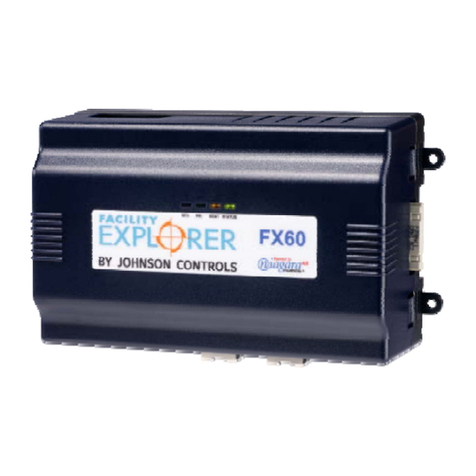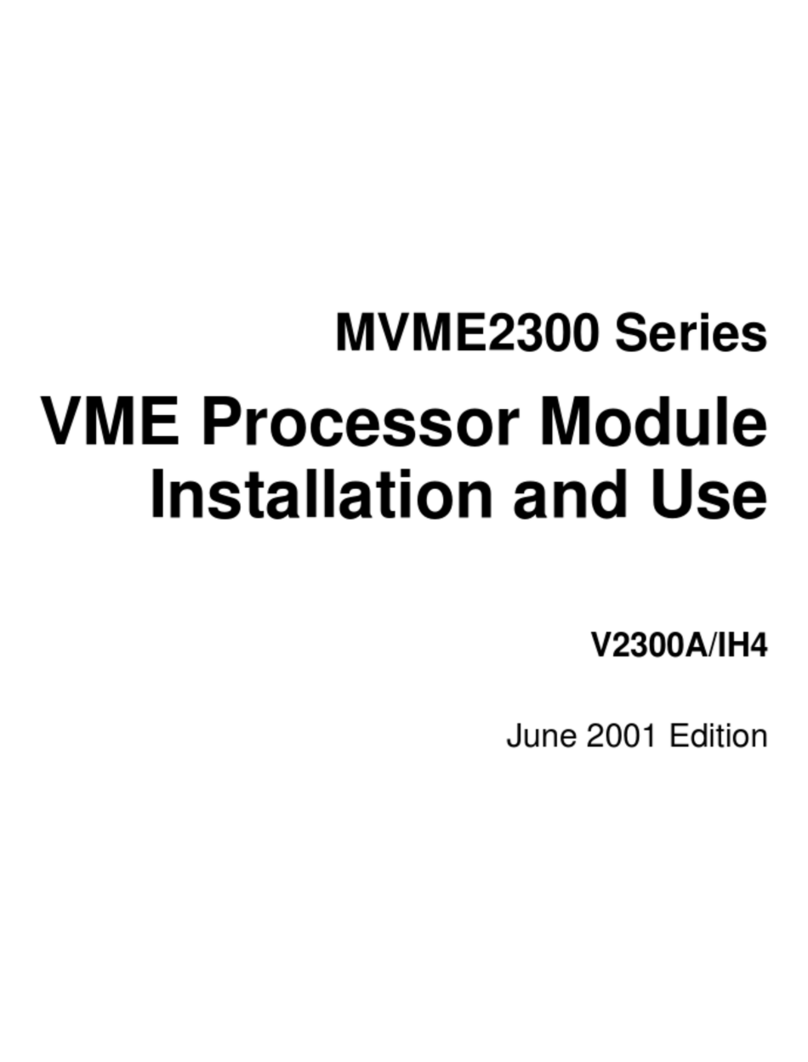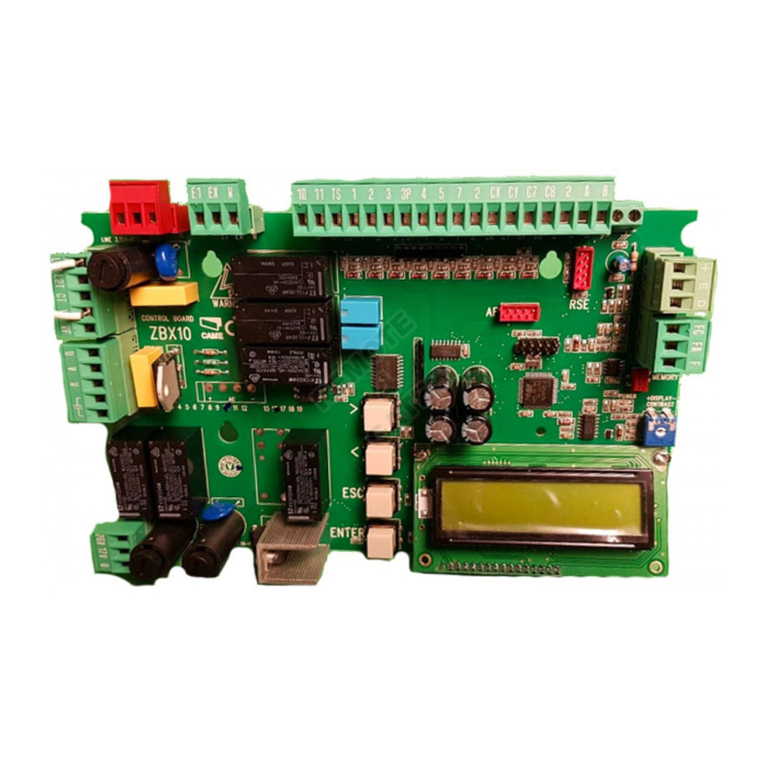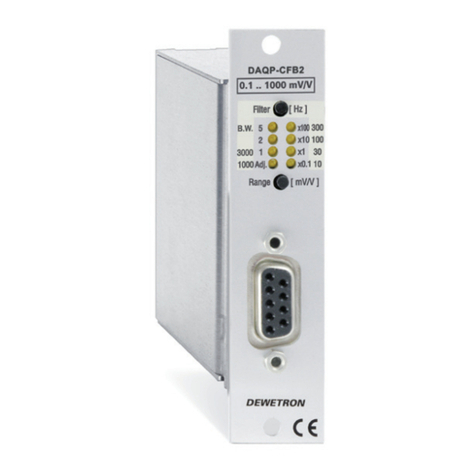Neumo RIEGER N1 Operating instructions

Operating and maintenance manual
HYGIENIC-MIX PROOF VALVES N1 / NV1
Translation

HYGIENIC-MIX PROOF VALVES N1 / NV1
General
Page 2 of 54 2021 BA-N1_NV1_EN-GB_Rev05
Gebr. Rieger GmbH + Co. KG
Kochertalstraße 32
73431 Aalen; Germany
Telephone: + 49 (0) 73 61 / 57 02-0
Telefax: + 49 (0) 73 61 / 57 02-51
http//www.rr-rieger.de
© Gebr. Rieger GmbH + Co. KG | D-73431 Aalen
All rights reserved in particular the right of duplication and distribution as well as translation No
part of the manual may be reproduced in any form or electronically stored, processed, duplicated
or distributed without the written permission of Gebr. Rieger GmbH + Co. KG.
Subject to change

HYGIENIC-MIX PROOF VALVES N1 / NV1
General
BA-N1_NV1_EN-GB_Rev05 2021 Page 3 of 54
Table of content
1 General............................................................................................................................................ 7
1.1 Changes and reservations ....................................................................................................... 7
1.2 Warranty and liability.............................................................................................................. 7
1.3 Scope of delivery ..................................................................................................................... 8
1.4 Documentation........................................................................................................................ 8
1.5 Signs and symbols in this manual............................................................................................ 8
1.5.1 Safety signs...................................................................................................................... 8
1.5.2 Used symbols in this manual........................................................................................... 8
1.6 Name plate .............................................................................................................................. 9
1.7 Personnel qualification............................................................................................................ 9
1.7.1 Personal protective equipment..................................................................................... 10
1.8 The owner‘s duty of care....................................................................................................... 10
1.9 Used abbreviations and technical terms............................................................................... 11
2 Packaging, transport and storage.................................................................................................. 12
2.1 Packaging............................................................................................................................... 12
2.2 Transport............................................................................................................................... 12
2.3 Storage .................................................................................................................................. 12
3 Safety............................................................................................................................................. 13
3.1 Intended use.......................................................................................................................... 13
3.2 Reasonably foreseeable misuse ............................................................................................ 13
3.3 Residual hazards.................................................................................................................... 14
3.3.1 Thermal hazards............................................................................................................ 14
3.3.2 Mechanical hazards....................................................................................................... 14
3.4 Noise...................................................................................................................................... 15
4 Description .................................................................................................................................... 16
4.1 Design.................................................................................................................................... 16
4.2 Identification of the valve ..................................................................................................... 16
4.2.1 Identification by type designation................................................................................. 16
4.2.2 Identification by the article number ............................................................................. 16
4.2.3 Valve type...................................................................................................................... 17
4.2.4 Sterilise and flush .......................................................................................................... 17

HYGIENIC-MIX PROOF VALVES N1 / NV1
General
Page 4 of 54 2021 BA-N1_NV1_EN-GB_Rev05
4.2.5 Casing ............................................................................................................................ 17
4.2.6 Nominal diameter.......................................................................................................... 18
4.2.7 Seal ................................................................................................................................ 19
4.2.8 Material of the casing.................................................................................................... 20
4.2.9 Function of the leakage space....................................................................................... 20
4.2.10 Actuator......................................................................................................................... 20
4.3 Special configurations ........................................................................................................... 22
4.3.1 Suitable for potentially explosive areas acc. to ATEX.................................................... 22
4.3.2 3-A certification............................................................................................................. 23
5 Technical data................................................................................................................................ 24
5.1 Casing configuration.............................................................................................................. 24
5.2 Dimensions and weights........................................................................................................ 24
5.3 Operating data....................................................................................................................... 25
5.3.1 Used Material................................................................................................................ 25
5.3.2 Closing pressure against the product............................................................................ 25
5.3.3 Pipe pressure................................................................................................................. 25
5.3.4 Permissible product temperatures................................................................................ 26
5.3.5 Permissible ambient temperatures............................................................................... 26
5.3.6 Surface quality............................................................................................................... 26
5.4 Technical data of the pneumatic actuator ............................................................................ 26
5.4.1 Connection .................................................................................................................... 26
6 Assembly / Installation.................................................................................................................. 27
6.1 Connection ............................................................................................................................ 27
6.2 Installation position............................................................................................................... 27
6.3 Installing the valve in a pipeline............................................................................................ 28
6.3.1 Welding instructions for the casing............................................................................... 28
6.3.2 Installing the valve parts................................................................................................ 29
6.3.3 Assembly of the sensors................................................................................................ 29
7 Commissioning .............................................................................................................................. 31
7.1 Safety during commissioning ................................................................................................ 31
7.2 Functional test without product in installed condition......................................................... 31
7.3 Commissioning ...................................................................................................................... 31
8 Operation ...................................................................................................................................... 32

HYGIENIC-MIX PROOF VALVES N1 / NV1
General
BA-N1_NV1_EN-GB_Rev05 2021 Page 5 of 54
8.1 Safety during operation......................................................................................................... 32
8.2 During operation ................................................................................................................... 32
8.3 Shutdown of the valve........................................................................................................... 32
9 Maintenance.................................................................................................................................. 33
9.1 Safety during maintenance and repair of the valve.............................................................. 33
9.2 General.................................................................................................................................. 33
9.3 Cleaning................................................................................................................................. 34
9.3.1 Cleaning......................................................................................................................... 34
9.3.2 Cleaning and sterilisation in process............................................................................. 35
9.3.3 Table of cleaning agents................................................................................................ 37
9.4 Maintenance intervals........................................................................................................... 38
9.4.1 Values recommended for seals..................................................................................... 38
9.4.2 Pressure spring guideline values ................................................................................... 39
9.4.3 Necessary torques......................................................................................................... 39
9.4.4 Lubrication plan............................................................................................................. 40
9.5 Spare parts............................................................................................................................. 40
9.6 Parts of the valve................................................................................................................... 41
9.6.1 Explosionszeichnung...................................................................................................... 41
9.6.2 Designation of the parts................................................................................................ 42
9.7 Disassembly........................................................................................................................... 42
9.7.1 Safety during disassembly............................................................................................. 42
9.7.2 Necessary tools (not included in the scope of delivery) ............................................... 42
9.7.3 Disassembling the valve from the casing ...................................................................... 43
9.7.4 Disassembly of the remaining seals for maintenance................................................... 44
9.8 Assembly................................................................................................................................ 45
9.8.1 Safety during assembly.................................................................................................. 45
9.8.2 Necessary tools (not included in the scope of delivery) ............................................... 45
9.8.3 Assembly of the valve parts........................................................................................... 46
9.8.4 After Assembly .............................................................................................................. 48
9.9 Adjusting the stroke at the lower valve seat......................................................................... 49
10 Troubleshooting ........................................................................................................................ 50
10.1 What to do in an emergency?............................................................................................... 50
10.2 Safety during fault rectification............................................................................................. 50

HYGIENIC-MIX PROOF VALVES N1 / NV1
General
Page 6 of 54 2021 BA-N1_NV1_EN-GB_Rev05
10.3 Faults, possible causes and their remedy.............................................................................. 50
11 Disposal ..................................................................................................................................... 52
12 Documentation of the Suppliers ............................................................................................... 53
12.1 Connection and function of the control head....................................................................... 53

HYGIENIC-MIX PROOF VALVES N1 / NV1
General
BA-N1_NV1_EN-GB_Rev05 2021 Page 7 of 54
1General
These operating and maintenance instructions contain important information to assist you
in the safe, economic and proper use of the valve. The operating and maintenance
instructions are also directed to qualified, instructed and trained personnel who are
responsible for installing the valve to an existing system or disassembling it.
In accordance with the Machinery Directive 2006/42/EC, the valve is an incomplete
machine.
Everybody who executes works at or with the valve must have read and understood this
instruction and the safety instructions in it. Also the documents as drawings and additional
documentation must be observed. If instructions, recommendations and notices are not
followed, any possible warranty claim about the valve can be restricted or rejected.
1.1 Changes and reservations
We strive for the accuracy and timeliness of these operating and maintenance instructions.
In order to maintain our technological edge, it may be necessary to make changes to the
product and its operation without prior notice. We accept no liability for faults, failures and
resulting damages.
If applicable, also pay attention to additional information supplied.
1.2 Warranty and liability
In principle the “General sales terms and delivery conditions” of Gebr. Rieger GmbH + Co.
KG apply. These are available at least since conclusion of contract and are available on the
internet page of Gebr. Rieger GmbH + Co. KG in the currently valid version.
The Gebr. Rieger GmbH + Co. KG excludes warranties and liability claims for personal injury
and property damage, if they are caused by one or several of the following causes.
Not intended use.
Incorrect installation, commissioning.
Operation with incorrectly installed or non-functioning safety equipment.
Failure to observe the safety instructions and information in the operating and maintenance
instructions
Repairs or any tampering carried out by persons neither authorised nor trained to do this.
Unauthorised conversions or structural modifications.
Maintenance and repair work carried out incorrectly or not on schedule.
Operating supplies, accessories, spare parts and additives that are the cause of damage and for
which the manufacturer has not granted an approval. The manufacturer accepts no liability for
consequential damage.
Disasters caused by external influence or force majeure
Contamination of the product by malfunctions, e.g. of the actuator. The manufacturer of the
valve accepts no liability –the operator shall take appropriate countermeasures.
INFORMATION
If any unauthorized conversions or structural changes are made to the valve, the
declaration of conformity or the manufacturer's declaration issued will expire. Any other
certificates will also become invalid and be subject to a new evaluation process.

HYGIENIC-MIX PROOF VALVES N1 / NV1
General
Page 8 of 54 2021 BA-N1_NV1_EN-GB_Rev05
1.3 Scope of delivery
The scope of delivery results from the order and the shipping documentation.
1.4 Documentation
The operating and maintenance instructions are an integral part of the product and thus
part of the scope of delivery. One copy of these instructions shall be made available to the
authorised personnel for the entire service life of the valve and be complete and legible. If
the product is resold, the instructions must also be passed on.
In addition to these instructions, the laws, directives, guidelines, regulations and standards
applicable in the country of use and at the place of use must be observed.
1.5 Signs and symbols in this manual
1.5.1 Safety signs
DANGER
Danger by cause!
This is a warning of hazards that could result in serious irreversible injury or even death
or damage to equipment or the environment.
WARNING
Danger by cause!
This is a warning of hazards that could result in irreversible injury and damage to
equipment or the environment.
CAUTION
Danger by cause!
This is a warning of possible hazards that could result in reversible injury and damage to
equipment or the environment:
NOTICE
Danger by cause!
This is a warning of possible hazards that could result in damage to equipment or the
environment.
1.5.2 Used symbols in this manual
Enumeration
Important points are listed here.
Important points are listed here.
Steps for action
Steps for action are described here.1.
Steps for action are described here.2.
Success monitoring
The characteristics of successful success monitoring are listed here.
!
!
!

HYGIENIC-MIX PROOF VALVES N1 / NV1
General
BA-N1_NV1_EN-GB_Rev05 2021 Page 9 of 54
Information
INFORMATION
Helpful information for safe operation of the system is given here.
1.6 Name plate
Every valve has a type plate that enables clear identification and includes the most
important technical data.
Table 1 Name plate
In order to have the data at hand promptly if required, the data on the type plate should be
transferred to the following table:
Designation
Data
Type –Type designation
SN ––serial number –is determined when an
order is placed
month-year/######
ART –item number
Kit 5 –number of the spare parts package
5_______
Required –permitted control pressure
min. __ bar –max. __ bar
Permissible temperature
max. temp. ___ °C / ___ °F
Table 2 Type plate data
In case of any questions, the following information should be provided:
Nominal diameter
Sealing material
Casing material
Connection types (DIN 11851, DIN 11864, welding end etc.)
Accessories of the actuator (e.g. feedback signal)
1.7 Personnel qualification
All activities at the valve may only be carried out by authorised personnel
The authorised personnel must:
Gebr. Rieger GmbH + Co. KG
Kochertalstr.32, 73431 Aalen
SN: XXXXXXXXXX (Serial number)
ART: XXXXXXXXX (Item number)
Kit: 5########
Steuerdruck / Air pressure:
min. 6 bar, max 10 bar
max. temp. 130 °C / 266 °F

HYGIENIC-MIX PROOF VALVES N1 / NV1
General
Page 10 of 54 2021 BA-N1_NV1_EN-GB_Rev05
be at least 18 years old.
be familiar with and able to apply the accident prevention regulations and safety instructions for
the system.
have been trained and instructed on the rules of conduct in the event of a malfunction.
have the physical and mental capacity to assume their responsibility and carry out the tasks and
activities at the system.
must be trained and instructed according to their responsibilities, tasks and activities at the
system
must have understood the technical documentation relating to their responsibilities, tasks and
activities on the valve and the system and be able to implement it in practice.
Notes on handling the valve safely:
Prior to starting work on the valve, make yourself familiar with the system and the field of work.
The valve may only be used for its intended purpose.
Use suitable lifting gear for transporting and mounting heavy accessory parts.
Wear personal protective equipment.
In the event of any defects of the safety equipment or other defects, notify the responsible
personnel without delay.
All identification and markings attached to the valve must be observed.
The valve may only be operated in the specified explosion protection class. This is named and
confirmed in the specified contractual documents.
1.7.1 Personal protective equipment
We recommend that personal protective clothing is worn for all work described in the
instructions. That includes e.g.
Suitable safety shoes
Suitable protective gloves
Suitable hearing protection
Suitable safety glasses
There may also be other national regulations or internal company regulations such as
wearing a protective helmet or a hair net.
1.8 The owner‘s duty of care
The operator of the system with the valve must ensure that,
the valve is only used for its intended purpose.
the valve and the system are only operated in perfect condition. Any malfunctions and defects
must be rectified as soon as they are detected.
the valve is integrated in the system according to the specifications.
the valve is only connected to pipelines, which are depressurized during connection works
tensile or compressive stress to the body must be ruled out.
if necessary, the explosion protection zone was determined in which the valve is used.
the safety instructions in these instructions are incorporated into the risk assessment for the
workplace and the conformity assessment of the system.
all local and national regulations on safety at work and environmental protection are complied
with.
the authorised personnel have been trained in handling the valve and the system.

HYGIENIC-MIX PROOF VALVES N1 / NV1
General
BA-N1_NV1_EN-GB_Rev05 2021 Page 11 of 54
the authorised personnel have understood the documentation and can implement it in practice.
only authorised personnel perform maintenance work and fault rectification
the operating instructions are always available at the valve operation point, in a legible and
complete condition.
necessary personal protective equipment is provided to the personnel.
there is a sufficient lightning is available at the workplace for the valve.
the operating instructions are always available at the valve operation point, in a legible and
complete condition.
that the limit values applicable to the valve are not exceeded.
an emergency stop button is installed on the system for any emergencies that immediately stops
the product feed.
1.9 Used abbreviations and technical terms
ANSI = American National Standards Institute: American institute for standardisation
ATEX = ATEX directives of the European Union: Directives relating to explosion protection.
AWS = American Welding Society: US-American standardisation body for welding technology
CIP = Clean In Place: the system is cleaned at the areas that come into contact with the product
without dismantling it.
DIN = German industrial standard
EHEDG = European Hygienic Engineering and Design Group: European association of companies
from the food industry, research institutes and public health institutions for the definition of
hygiene standards
EN = European standard
L = air supply
SIP = Sterilisation In Place: the system is sterilised at the areas that come into contact with the
product without dismantling it.

HYGIENIC-MIX PROOF VALVES N1 / NV1
Packaging, transport and storage
Page 12 of 54 2021 BA-N1_NV1_EN-GB_Rev05
2Packaging, transport and storage
2.1 Packaging
To ensure sufficient protection during transport the valve was packed carefully. When the
product is received, the packaging and the product should be checked for any damage. A
damaged valve must not be put into operation.
Directly after receiving the delivery: Check that the valve and the individual assemblies /
components are complete according to the shipping documents.
In the event of any transport damage: notify the forwarding company and Gebr. Rieger GmbH +
CO. KG and keep the packaging for a verification or a possible return shipment.
If parts are missing: Inform the manufacturer / supplier about the missing parts in writing.
NOTICE
Risk of damage due to improper use!
Unpack and handle the valve carefully.
2.2 Transport
The valve is normally packed and shipped in a box completely ready for installation. In
chapter 5.2 Dimensions and weights on page 22 the weights of the valve sizes are listed.
Regard the valid national and regional guidelines during transport. When necessary, use
suitable hoists for transporting the valve.
2.3 Storage
The freight packaging of the device and the spare and replacement parts are designed for a
storage period of three months following delivery. In the event of a storage period
exceeding three months: consult Gebr. Rieger GmbH + Co. KG.
If the valve is not installed and put into operation immediately after unpacking it, it must be
protected from moisture and dirt.
The following storage conditions must be complied with in order to maintain perfect quality
and functionality:
Keep the valve in its original packaging or repack it.
Relative humidity: max. 60 %.
Room temperature: + 10 °C to + 25 °C (+ 50 °F to + 77 °F)
Seals shall be stored protected against ozone and direct sunlight.

HYGIENIC-MIX PROOF VALVES N1 / NV1
Safety
BA-N1_NV1_EN-GB_Rev05 2021 Page 13 of 54
3Safety
Read the following safety instructions and information on safe operation before starting
work. Familiarise yourself with all functions. Store these instructions in a safe place and
pass them on as necessary.
In addition to the safety instructions in these instructions, the relevant statutory and
internal regulations, rules and guidelines must also be observed at the installation site.
Any failure to observe the safety instructions and regulations may result in a danger to the
life and health of persons, to the environment and to damage to equipment.
If damage or faults are detected on the valve or the system or if it can be assumed for any
other reasons that safe operation is no longer possible, the valve may no longer be
operated and the system must be shut down. Possible operational malfunctions:
Malfunctions in the control system could result in uncontrolled movements.
The valve is blocked by a part or the system.
The valve or parts of it are blocked.
Possible malfunctions, their causes and possible remedies are shown in chapter 10
Troubleshooting on page 50. They must be applied for rectifying faults.
3.1 Intended use
At the time of placing it on the market the valve corresponds to the state of the art and the
applicable safety regulations, provided it is used as intended.
RIEGER mix proof valves N1 are used for the mix-proof isolation of two lines of the system's
pipeline system. The valves are only for vertical installation.
The valve’s body and sealing materials were selected according to the flow medium and its
properties.
The properties include:
pH value
Viscosity
Chemical properties
Physical properties
Classification of the medium in an explosion protection zone according to the ATEX directive.
The valve is designed for operation with media without solid components. If the medium
contains solid components, e.g. cores, fibres or pieces of fruit, this must be taken into
account in the order and the valve must be selected accordingly. A valve selected for a
medium with defined solid components is not necessarily also suitable for a medium with
larger or different solid components.
The valve may only be operated with the flow medium for which it was selected.
3.2 Reasonably foreseeable misuse
Any unintended use and any activities not described in these instructions represent non-
permissible misuse and are outside the legal liability limits of the manufacturer.
If the valve is used incorrectly, all warranties issued by the manufacturer with the valve will
become invalid.

HYGIENIC-MIX PROOF VALVES N1 / NV1
Safety
Page 14 of 54 2021 BA-N1_NV1_EN-GB_Rev05
Misuse includes:
Use in explosive atmosphere.
Operation of the valve with other data than the agreed technical data.
Operation of the valve in a not authorized installation position.
Operation of the valve for applications for which a certificate is required, unless the valve was
ordered for this application and this is confirmed in the order; in this case the necessary
certificates are also provided.
Operation of the valve with a medium other than the agreed medium. Any change to the solid
components, e.g. size and shape, also represents misuse. To avoid damage to the valve, it is
essential to consult the manufacturer before changing the flow medium to determine whether
the valve can be used for the changed medium.
Operating the valve with products that are chemically unstable or classified as explosives.
Maintenance or repair work not carried out or carried out incorrectly.
3.3 Residual hazards
3.3.1 Thermal hazards
Danger due to hot or cold surfaces!
The surfaces of the actuators and components may be hot or very cold and cause burns.
Wear personal protective equipment.
Allow the valve to cool down or warm up.
If required due to the risk assessment for the system, the operator of the system shall attach a
safeguard against contact or thermal insulation to the system.
3.3.2 Mechanical hazards
Carelessness or negligent use of personal protective equipment may result in crushing
injuries or impact. At the valve there is a risk of unexpected malfunctions due to damage to
its components, a failure or a fault of the control system. So that dangers are recognized in
good time, the operating area must have a sufficient lightning.
Danger due to moving parts!
Reaching the valve spindle could result in serious injuries from crushing or shearing of
limbs.
Do not reach into the valve body or lock head during operation.
If required due to the risk assessment for the system, the owner of the system shall attach a
safeguard against reaching into the valve to the system
Observe the follow-up time: if the valve needs to be opened for maintenance, it must be
ensured that no components are moving any more.
Prior to all works at movable parts of the system:
1. Turn off the system.
2. Secure the system against recommissioning.
3. Wait until all parts have stopped.
Danger due to pre-tensioned compression springs
Actuators with pre-tensioned compression springs are under pressure. They may only be
disassembled by experienced and trained personnel. Send the actuator to the manufacturer
for maintenance.

HYGIENIC-MIX PROOF VALVES N1 / NV1
Safety
BA-N1_NV1_EN-GB_Rev05 2021 Page 15 of 54
Danger due to unprotected valve mechanisms
Unprotected valve mechanisms can pose shearing, crushing and pinching hazards during
installation, commissioning and setting work.
No second person is permitted in the danger zone during these activities.
Covers may only be opened or removed for the duration of maintenance and repair work.
During operation, they must be closed or mounted again correctly
Keep hands, hair, clothing and tools away from moving parts.
Do not wear open hair, wide clothes and jewels (chains, rings) during works at the valve.
Danger due to pneumatics and steam
When working on pressurised lines or components, pressurised media could be released
abruptly. That can result in uncontrolled movements of components and injuries.
Depressurise system sections or pressure lines to be opened prior to repair work.
Work on pressure pipes may only be carried out by qualified personnel.
Danger due to oil, grease and other chemical substances
Handling oil, grease and other chemical substances can result in damage to health.
Do not fail to read the safety data sheet / operating instructions before handling oil, grease and
other chemical substances. If anything is unclear concerning the application, consult the
manufacturer of the product.
Wear suitable personal protective equipment in accordance with the safety data sheet.
In the event of accidents take immediate action according to the safety data sheet.
Substances that are hazardous to the environment can pollute the soil or groundwater.
Retain, bind and correctly dispose of substances hazardous to water. The medium is possibly
also hazardous to the environment.
Leaks at valve parts where substances hazardous to water escape must be immediately repaired
and re-sealed.
Document maintenance work and system modifications at units hazardous to water in a plant
register.
3.4 Noise
No modifications to the valve are permitted that could increase noise emissions.
If required, take suitable noise reduction measures.
Wear hearing protection if required.
The valve's sound emission level is ≤70 dB(A).

HYGIENIC-MIX PROOF VALVES N1 / NV1
Description
Page 16 of 54 2021 BA-N1_NV1_EN-GB_Rev05
4Description
RIEGER mix proof valves N1 are used for the mix-proof isolation of two lines of the system's
pipeline system.
In this manual N1 is used also for NV1 valves.
They are developed, designed and built for commercial and industrial use. The leakage
drain is placed, so that this valve is suitable for vertical installation. Aggressive, neutral and
fluid media that do not impair the physical and chemical properties of the respective
housing and seal materials are suitable for use as flow media. These mix proof valves have a
pneumatic actuator with return spring. In case of loss of power or pressurised air the valve
closes.
4.1 Design
Depending on the application various casing and versions as well as versions with control
head and initiator retrieval are possible. The delivered version can be taken from the order
papers and from the name plate.
The parts of the valve are listed in 9.6 Parts of the valve on page 41.
4.2 Identification of the valve
4.2.1 Identification by type designation
The valve can be identified by its type designation. The type designation is a combination of
Type designationFigure 1
4.2.2 Identification by the article number
The valve may also be identified by the article number.
Example:
Valve type
Sterilization
N1.
0
1.
Arrangement of the outlets
-04
Nominal diameter
001
Ratio of nominal diameters

HYGIENIC-MIX PROOF VALVES N1 / NV1
Description
BA-N1_NV1_EN-GB_Rev05 2021 Page 17 of 54
Example item numberFigure 2
4.2.3 Valve type
The combination „N1“ in the type designation defines the valve as a mix proof valve N1.
In the article numbers the sequence of numbers „301“ defines the valve as a mix proof
valve N1.
4.2.4 Sterilise and flush
N1.XX.XXX-XX: In the type designation, the number can be used to indicate whether the
valve can be sterilised or not:
Number
Meaning
0
No
2
Yes
Table 3 Indication of the sterilisation in the type designation
301XX.XXXX.XX.XXXX.XX: In the article number the number combination can be used to
indicate whether the valve can be sterilised or not.
Number
Meaning
00
clocking without leakage
01
flushable without lifting
02
lower valve disc can be steam stream sterilised
03
sterilisation via flushing chamber
07
NV1, without sump
08
NV1, flushable without clocking
Table 4 Indication of the sterilisation in the item number
4.2.5 Casing
Casing configuration
301XX.XXXX.XX.XXXX.XX
Valve type
Clocking
301
10
.0
Parts of the casing
00
.01
.0404
.32
Outlets
Material of the seal
nominal diameter
Material of the casing
0
Special versions

HYGIENIC-MIX PROOF VALVES N1 / NV1
Description
Page 18 of 54 2021 BA-N1_NV1_EN-GB_Rev05
Number
Meaning
1
Casing one part = without clamp
2
Casing two parts = without clamp
3
Casing three parts = without clamp
Table 5 Definition of the casings in the item number
Arrangement of the outlets
Type designation: N1.XX.XXX-XX
Item number: 301XX.XXXX.XX.XXXX.XX
Type designation
Item number
Type designation
Item number
Type designation
Item number
Type designation
Item number
Type designation
Item number
N1.01
10
N1.02
20
N1.03
30
N1.04
40
N1.05
50
Table 6 Arrangement of the outlets
On demand there are casing configurations with other arrangements of outlets possible.
4.2.6 Nominal diameter
Ratio of nominal diameters of the outlets
N1.XX.XXX-XX
In the type designation, a three-digit number combination indicates whether the outlets
are the same size or the upper outlet is larger or smaller.
Number combination
Meaning
001
All outlets are the same size.
150
Reduced nominal width; upper side larger
200
Reduced nominal width; upper side smaller
Table 7 Ratio of nominal diameters in the type designation
A
E
A
E
A
B
C
A
B
D
D
C
A
A
B
C
A
B
D
A
C
A

HYGIENIC-MIX PROOF VALVES N1 / NV1
Description
BA-N1_NV1_EN-GB_Rev05 2021 Page 19 of 54
Nominal diameter
N1.XX.XXX-XX: In the type designations a two-digit number combination indicates, which
size the nominal diameters are. If the upper and lower nominal diameters differ, both
nominal diameters are written, separated by a slash „/“.
301XX.XXXX.XX.XXXX.XX: In the item number a four-digit number combination indicates,
which size the nominal diameters are.
Numbers
Meaning
Numbers
Meaning
Numbers
Meaning
DIN
Inch
ISO
0
1
DN 10
2
1
3/8"
4
1
DN 10 ISO
0
2
DN 15
2
2
1/2"
4
2
DN 15 ISO
0
3
DN 20
2
3
3/4"
4
3
DN 20 ISO
0
4
DN 25
2
4
1"
4
4
DN 25 ISO
0
5
DN 32
2
6
1 1/2"
4
5
DN 32 ISO
0
6
DN 40
2
7
2"
4
6
DN 40 ISO
0
7
DN 50
2
8
2 1/2"
4
7
DN 50 ISO
0
8
DN 65
2
9
3"
4
8
DN 65 ISO
0
9
DN 80
3
0
4"
4
9
DN 80 ISO
1
0
DN 100
3
2
6"
5
0
DN 100 ISO
1
1
DN 125
5
1
DN 125 ISO
1
2
DN 150
5
2
DN 150 ISO
Table 8 Nominal diameter of the pipe connections
4.2.7 Seal
The valve is sealed by O-rings.
301XX.XXXX.XX.XXXX.XX
These can be made of EPDM or FKM.
Number
combination
Meaning
01
EPDM
03
FKM
Table 9 Material of the seal - Number in the article number

HYGIENIC-MIX PROOF VALVES N1 / NV1
Description
Page 20 of 54 2021 BA-N1_NV1_EN-GB_Rev05
4.2.8 Material of the casing
Depending on the medium and the application the material of the casing is chosen. In the
article number this is defined by the last two numbers. The most used materials are:
10: 1.4301 = AISI 304, polished
11: 1.4301 = AISI 304 fine turned
20: 1.4301 = AISI 304, matt
30: 1.4404 polished
31: 1.4404 fine turned
32: 1.4404/1.4435 = 316L
33: 1.4404/1.4435 = 316L –0.6 µm and electro polished
4.2.9 Function of the leakage space
In case of a closed valve the leakage space is opened. So it is ensured, that if one of the two O-
rings is defective, the leakage is drained pressureless through the channels in the lower valve
disc. This is shown in figure 3. The liquid drops on the surface below the valve and can be
recognised during the daily inspection. In case of a leakage the valve must be maintained and
the seals with contact with the product must be changed; see 9.4 Maintenance intervals on page
37
Lower valve disc and leakage space with outletFigure 3
Before the valve opens, the lower valve plate is raised and the leakage space is closed. Then
both valve discs are lifted and the valve opens into the upper valve casing.
4.2.10 Actuator
The actuator is air opening / spring closing NC. There are three air connections at the
actuator. In Figure 4 they are described with L1, L2, and L3. They have different tasks.
This manual suits for next models
1
Table of contents
